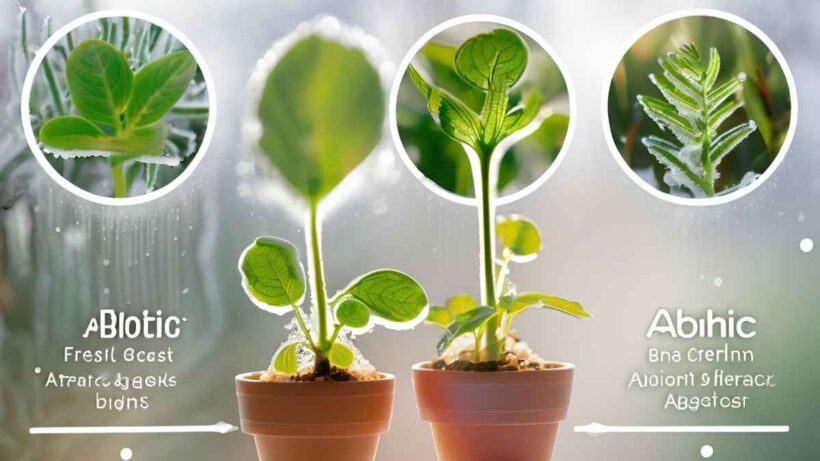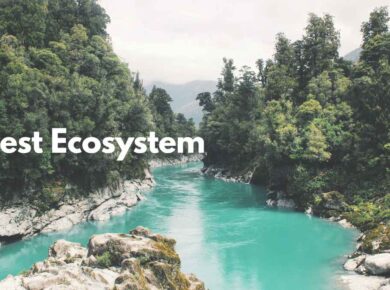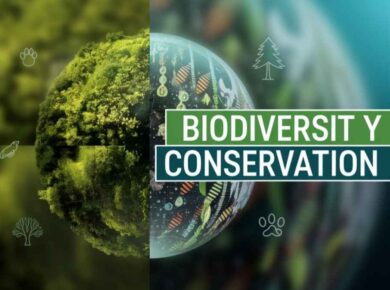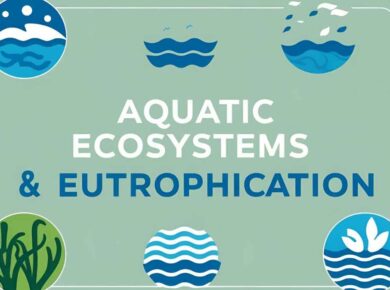Effect of abiotic components on plants
Effect of intensity of light on growth of plant
Extremely high intensity favors root growth than shoot growth, which results in increased transpiration, short stem, smaller & thicker leaves; on the other hand, low intensity of light retards growth, flowering & fruiting of the plant.
- When the intensity of light is less than the minimum, plant ceases to grow due to accumulation of CO2 & finally dies.
- Out of 7 colors in visible light only (Blue > Red > Violet) are effective in photosynthesis.
- Plants grown in Blue light are small (More roots, smaller stem), Plants grown in red light are etiolated (Pale & elongated) & Plants grown in UV & violet light are dwarf.
- Colour of light plays an important role during photosynthesis. Plants use only certain colours from light for the process of photosynthesis.
- The chlorophyll absorbs blue, red and violet light rays. Photosynthesis occurs more in blue and red-light rays and less, or not at all, in green light rays.
- The light that is absorbed the best is blue, so this shows the highest rate of photosynthesis, after which comes red light.
- Green light cannot be absorbed by the plant, and thus cannot be used for photosynthesis. Chlorophyll looks green because it absorbs red and blue light, making these colours unavailable to be seen by our eyes.
- It is the green light which is not absorbed that finally reaches our eyes, making the chlorophyll appear green.
- Plants give out carbon dioxide not only at night but during the day too.
- It happens because of the process of respiration in which plants take in oxygen and give out carbon dioxide.
- As soon as the sun rises another process called photosynthesis starts, in which carbon dioxide is taken in and oxygen is given out.
- Thus, the proportion of oxygen becomes greater in comparison to carbon dioxide in the lower atmosphere.
Effect of frost on plants
- Even a light frost freezes the soil moisture, hence when plants are exposed to sunlight, they are killed by increased transpiration + accumulation of CO2 when their roots are unable to supply moisture (Death of Sal seedlings is a fine example of effect of frost on plants)
- As a result of frost, water in the intercellular spaces of the plant gets frozen into ice which withdraws water from interior of the cells. This results in increasing concentration of salts & dehydration of cells, Thus, coagulation & precipitation of the cell colloid result in death of the plant
- Frost also leads to formation of Canker (a destructive fungal disease of trees that results in damage to the bark)
Effects of snow on plants
- Snow acts as blanket , prevent further drop in temperature & protects seedlings from excessive cold & frost
- Results in mechanical bending of tree stem & shortens the period of vegetative growth.
Effect of temperature on plants
- Excess high temperature results in death of the plant due to coagulation of protoplasmic protein.
- High temperature disturbs the balance between respiration & photosynthesis, thereby causing depletion of food, resulting in greater susceptibility to bacterial & fungal attack
- It also results in desiccation of plant tissues & depletion of moisture.
Die Back
- Refers to progressive dying, usually backwards from the tip of any portion of the plant.
- One of the adaptive mechanisms to avoid adverse conditions. In this mechanism, the root remains alive for years together but the shoots dies
For more updates, explore the Environment category. Feel free to share your thoughts and comments
If you’re passionate about building a successful blogging website, check out this helpful guide at Coding Tag – How to Start a Successful Blog. It offers practical steps and expert tips to kickstart your blogging journey!






